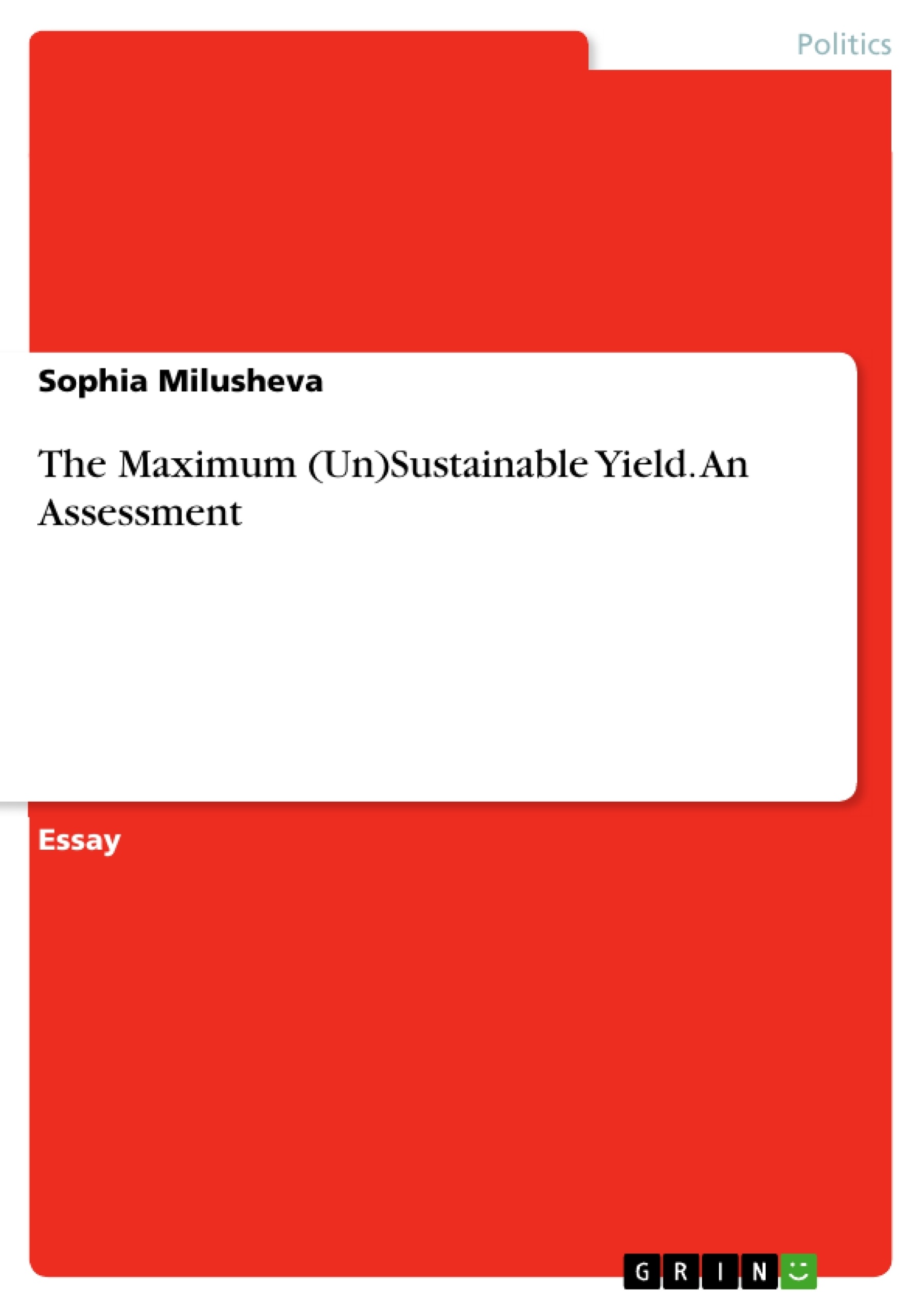This paper aims to investigate the roots of MSY and what prevents it from being as sustainable as intended. There exist three models of MSY; by Raymond and Hold, by Ricker, and by Schaefer. This paper focuses on Schaefer’s Surplus Production Model, explaining how it works in regard to stock assessment and calculation approaches. Next, the scientific limitations of MSY are discussed, followed by the main focus of this paper, namely taking a closer look at the history of MSY in order to explain current critiques. It is found out that MSY is in fact a policy disguised as science which complicates the execution of its good intentions, and that fishery policies were not based on how successful MSY theories were, but rather the success of the theories was based on the fishery policies. These historic evolutions largely explain why the Maximum Sustainable Yield cannot be truly sustainable. Finally, several recommendations for the improvement of MSY and fisheries management are suggested.
The term “over-fishing” was already present in the 1850s, however the extent of marine fisheries resources overexploitation was only realized in the 1900s. Simple and easily understandable guidelines on catch limits became desirable in fisheries management and thus a fixed maximum catch that a population could support seemed like an excellent reference point. The Maximum Sustainable Yield (MSY) has a hundred years long history, emerging from mathematical models that were first introduced to population ecology in the 1930s. It further developed and bloomed in the 1950s, as Surplus Production Models were developed. Today, MSY is applied internationally by almost all regional management bodies, and is therefore widely used for the assessment of exploited stocks worldwide. However, there is a widespread criticism regarding its effectiveness.
Table of Contents
- Introduction
- The MSY Concept
- Surplus Production Theory
- Stock assessment
- Calculation approaches
- Production models
- Analytical models
- Criticism
- Limitations and uncertainties
- Economic considerations
- The history of MSY - a policy disguised as science
- Limitations and uncertainties
- Recommendations for improvement
- Conclusion
- References
Objectives and Key Themes
This paper aims to explore the origins of the Maximum Sustainable Yield (MSY) concept and identify the reasons behind its failure to achieve true sustainability. The paper focuses on Schaefer's Surplus Production Model, examining its application in stock assessment and calculation approaches. It then delves into the scientific limitations of MSY and analyzes its historical development, revealing how it evolved from a scientific concept into a policy tool. The paper concludes by presenting recommendations for improving both MSY and fisheries management practices.
- The history and evolution of the MSY concept
- The scientific limitations of MSY
- The role of policy in shaping MSY
- Schaefer's Surplus Production Model and its application in stock assessment
- Recommendations for improving fisheries management
Chapter Summaries
The introduction provides a historical overview of the MSY concept and its emergence as a desirable guideline for fisheries management. It highlights the widespread use of MSY globally and the growing criticism surrounding its effectiveness.
Chapter 1 delves into the MSY concept, focusing on the Surplus Production Theory by Milner Schaefer. It explains how the model works, its limitations, and its application in stock assessment. The chapter also discusses the various calculation approaches used in MSY, including production and analytical models.
Chapter 2 explores the criticism surrounding MSY. It examines the limitations and uncertainties associated with the concept, particularly in terms of economic considerations. This chapter also examines the history of MSY, arguing that it has been used as a policy tool rather than a purely scientific framework.
Chapter 3 presents recommendations for improving MSY and fisheries management practices. These recommendations aim to address the limitations of the concept and foster more sustainable fisheries.
Keywords
Maximum Sustainable Yield (MSY), Surplus Production Theory, Schaefer's Model, Stock assessment, Overfishing, Fisheries management, Policy, Sustainability, Scientific limitations, Recommendations.
- Quote paper
- Sophia Milusheva (Author), 2020, The Maximum (Un)Sustainable Yield. An Assessment, Munich, GRIN Verlag, https://www.grin.com/document/1000032




